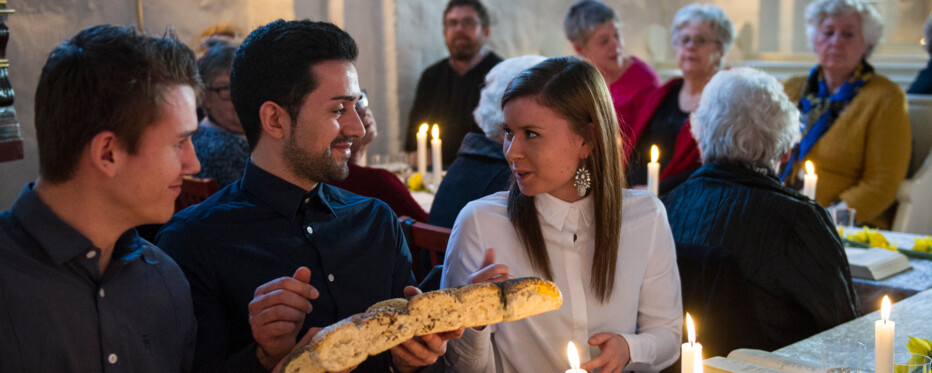The oldest and most important Christian festival
The Christian faith is founded on Jesus' resurrection from the dead. Jesus is the one he had proclaimed himself to be: God's Messiah, our saviour. In him we have a life that is stronger than death.
A week of dramatic events
The Easter festival lasts one week (called "the Holy Week") and marks the end of Lent, which is a period of 40 fast days. The week begins with Jesus' triumphal entry into Jerusalem on Palm Sunday and ends on Easter Monday where Jesus – after his death and resurrection – appears to his friends and disciples.
The paragraphs below introduce each of the holy days with their (special) church service. One way to find out how your parish church celebrates Easter is to contact the pastor or the church office. Find your church here.
Maundy Thursday, Good Friday and Easter Monday are public holidays in Denmark.
Palm Sunday (in Danish: palmesøndag)
Palm Sunday focuses on the entry of Jesus into Jerusalem on a donkey. The Jewish people receive and honour Jesus as a king, singing and waving palm branches. In many parish churches there is a tradition of visualizing or acting out the event with palm branches made of paper, a donkey, etc.
Maundy Thursday (in Danish: skærtorsdag)
This is the day when Jesus held his last supper with the disciples. It is also the day before his crucifixion. According to the Gospel of John (chapter 13) Jesus washed the feet of the disciples before having supper with them. That may be the reason why the day is called skærtorsdag which means "clean Thursday". Maundy Thursday commemorates the Eucharist. Many parish churches hold an evening service that includes a meal or some other special celebration of the Eucharist.
Good Friday (in Danish: langfredag)
On Good Friday we commemorate Jesus' crucifixion, death and burial. It is a day of grief and sorrow which we show by not lighting the candles in the church. Often the pastor does not wear a chasuble either. Most parish churches have a service in the morning but some choose to mark the time of the death of Jesus by holding a service at 3 p.m. Many churches do not hold an ordinary service with a sermon and the Eucharist. Instead the congregation listens to the reading of the Passion (the story of Jesus' suffering) and to choral works, as well as singing hymns.
Saturday (påskelørdag in Danish)
Easter Saturday is the day when Jesus lay in the grave. Therefore traditionally there is no church service on this day. However, some churches have adopted the custom of reading out loud from the Bible all night between Easter Saturday and Easter Sunday. Likewise many churches hold special services on Easter Saturday after sunset. Examples are rhythmic services or services inspired by the orthodox Easter tradition.
Easter Sunday (påskedag or påskesøndag in Danish)
On Easter Sunday we celebrate that Jesus rose from the dead. This day is the most important day of the church year. The climax of the service is when we read from the Bible about the resurrection. The Gospel of Mark (chapter 16) relates how three women who were followers of Jesus came to his grave and found that it was empty. An angel told them that Jesus had risen and had gone ahead of them back to the city, where they would see him again.
Easter Monday (anden påskedag)
The celebration of Jesus' resurrection continues on Easter Monday. The Bible readings in the church focus on how, after he was raised from the dead, Jesus appears to the disciples, encourages them, teaches them and tells them to be his witnesses.
Jesus as the Easter Sun
One of the oldest symbols of the Church is the sun as a symbol of Jesus. It used to be a tradition to get up early on Easter morning to see the Easter Sun (in Danish: påskesolen) dance as a symbol of the resurrection of Christ. The Danish hymn writer Thomas Kingo uses the sun as a symbol of Jesus in his Easter hymn Som den gyldne sol frembryder. Nowadays it is a tradition to see the sun dance on Pentecost morning.



